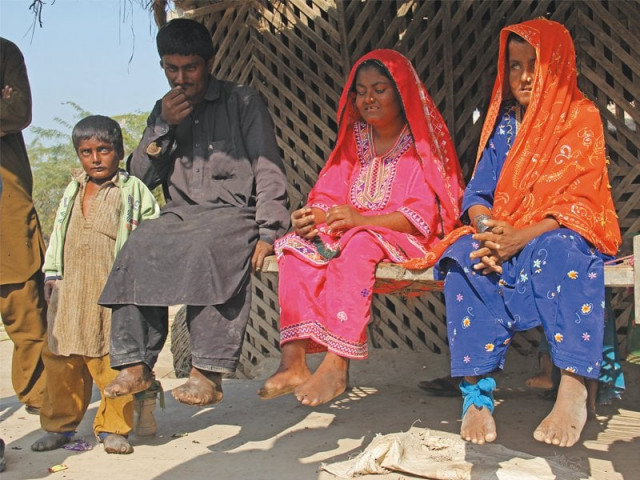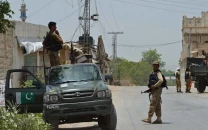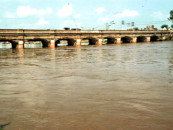What’s the diagnosis?: Fear of ‘melting’ away haunts eight family members
Mysterious and potentially fatal disease, which has claimed three lives, plagues relatives.

Family members affected by the disease stay together as others prefer to avoid them. PHOTO: AYESHA MIR/EXPRESS
Muhammad Arab Mallah’s son Saleh Muhammad, 18, and two daughters — Shahida, 25, and Eid, 20 —have been suffering from the disease since childhood, while two of his two children have already died reportedly from the disease.
Three of Saeen Dino Mallah’s sons — Abdul Majeed, 28, Ali Akbar, 19, and Gul Muhammad, 10 — are among the affected, while one of his sons died at the age of eight due to the condition.
The disease also ails two of Ali Murad Mallah’s children, Asghar, 7, and Sughra, 4.

The three men are cousins and their families live in the same mud compound. All members of the household eat and drink using the same glasses and plates while clothes are washed and kept together. Those who are not afflicted with the disease even share their beds with those who are and within the confines of their home, the diseased family members seem to be treated as normal.
The disease starts off as small blisters on various parts of the body and foul-smelling wounds later appear on hands and feet. The disease also causes partial blindness, with those affected by it unable to see anything other than blurred images. However, perhaps the most gruesome affect of the disease, is that the hands and feet of those affected by it start to “disappear”.
The process starts from the tips of their fingers and toes and slowly eats away the flesh, with a few sufferers being forced to use walking sticks since their hands and legs have become little more than stumps.
Keeping to themselves
Those suffering from the disease are aware that villagers and relatives keep their distance from them. The eight of them can be seen playing together and spend most of their time within the confines of their home - listening to songs on the radio and then singing them to each other.
Ali Akbar, one of the affected, can barely see but seems to be a typical talkative boy apart from the effects of the disease. “I don’t think it is because of cousin marriages,” when quizzed about whether the disease could be a genetic result of inbreeding. “Why are other members of our family normal then?”
Akbar was also thankful of the support provided to them by their family members who don’t discriminate against them due to their disease and revealed that, despite the threat of inbreeding, if he ever gets married then it will be to a family member since it is a tradition in their family.
To the big city
The elders of the family have failed to figure out what kind of treatment is required or if any is available and have visited various hospitals in Hyderabad and Karachi.
“I went to an eye hospital in Karachi with my sister Shahida,” one of the family members, Bachal, told The Express Tribune. “The doctors said that she requires treatment for a major disease but we can’t afford it for all the eight children.”
Social activist Ayaz Ahmed Shaikh feels that the disease can affect other normal family members if it is not treated soon. “The number of affected children is increasing,” he said. “No one cares about these poor children who can recover easily if provided with the proper treatment.”
Published in The Express Tribune, January 2nd, 2014.



















COMMENTS
Comments are moderated and generally will be posted if they are on-topic and not abusive.
For more information, please see our Comments FAQ